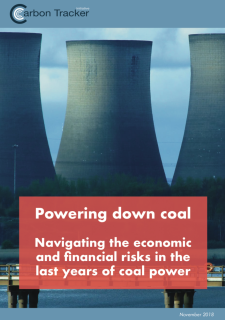
This report, and accompanying interactive portal, track the economic and financial risks of coal power at the asset-level throughout the world. The detailed analysis includes background and statistics to illustrate its key points.
The Carbon Tracker Initiative states that where profitability is defined as revenues minus long-run operating costs, their analysis finds that due to high fuel costs 42% of coal capacity operating today could be losing money. This suggests that from 2019 onwards, a combination of renewable energy costs, air pollution regulation and carbon pricing to result in further cost pressures and make 72% of the fleet cashflow negative by 2040.
Over the long-term coal power will become a net liability and those politicians in regulated markets who remain wedded to high-cost coal will be forced to choose between subsidising coal generation and power prices (which will impact the fiscal health of the state) or increase power prices (which will hurt consumers and undermine competitiveness). Coal owners could avoid $267 bn in stranded asset risk by phasing-out coal in a below 2°C scenario (which sees coal power phased-out globally by 2040). The report finishes by explaining the transition will expose governments and investors – both equity and debt – to material financial risk. It concludes that both governments and investors have opportunities to be agents of change and to ensure an ordered transition.
